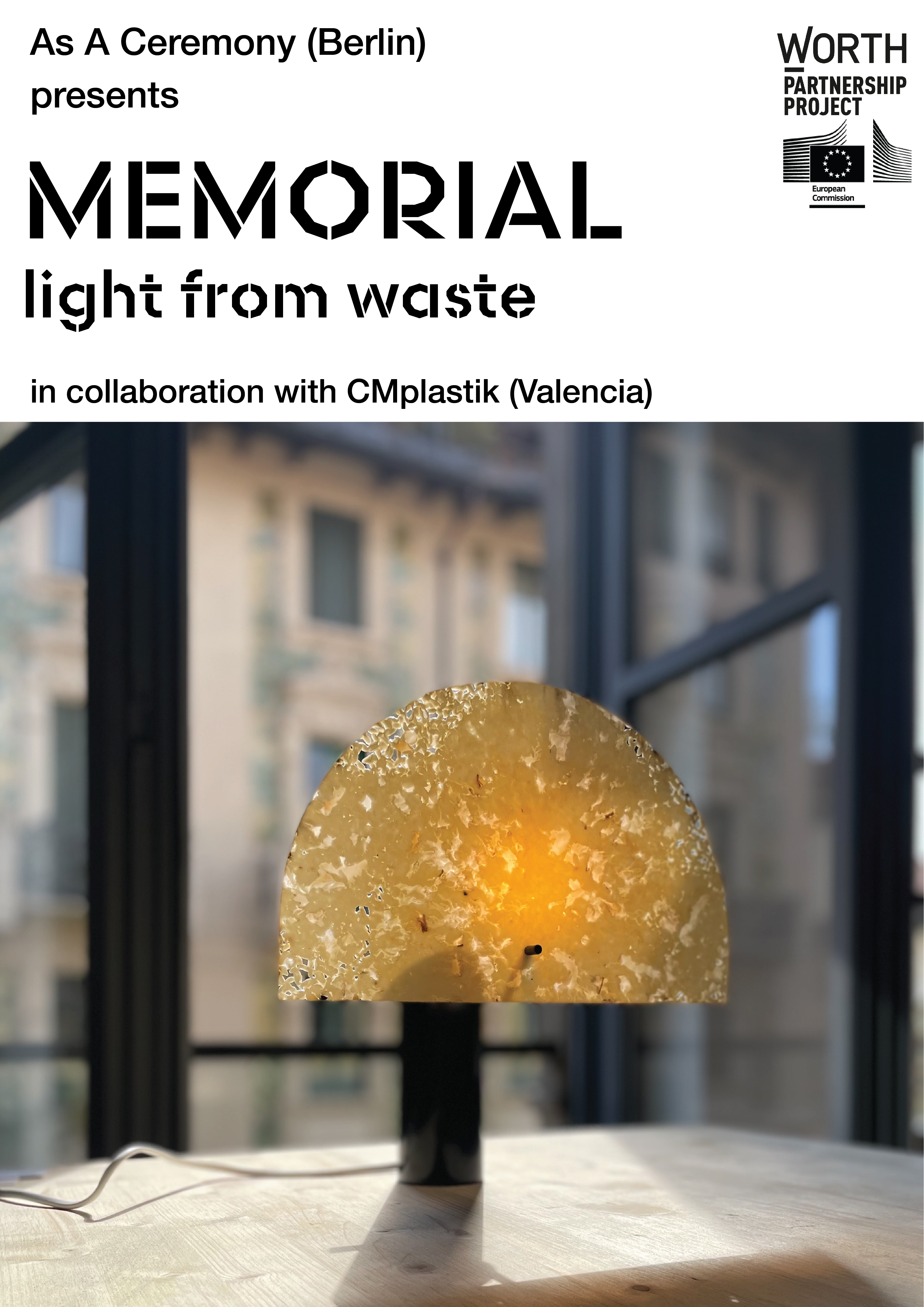
The aim of our project, MEMORIAL, is to develop a high quality translucent material made out of collected and disposed retrofit plastic globes.
The research is focused on understanding the value that relies on e-waste and addresses the role that our industry plays in the environmental crisis we face nowadays.
By recycling and reusing the precious LED chips and plastics from disposed LED bulbs taken from the landfills of our cities, our new light is a tribute in the shape of an object, that shines thanks to the use of its own waste.
The significance of the project lies in understanding design as a social matter that, in the form of a luminaire, aims to create an involvement and connection between the user and the waste they helped to reduce. The light that shines is the result of it.
MEMORIAL is an innovative contribution to the lighting field, where sustainability is tackled in regard to the two main elements of a luminaire, the housing (body) and the light source.
Our goal is to make a change towards a new paradigm, and getting closer to more regenerative design processes.
- Project locations
- GermanySpain
- Projects Edition
- WORTH Partnership Projects II
- Project Call
- 1st Call Projects
- Project Sector
- Furniture, home decoration, interior design and architecture
- Project Challenge
- New European Bauhaus
Stakeholders
Coordinators
AS A CEREMONY
- Address
- Germany
CM PLASTIK
- Address
- Spain


